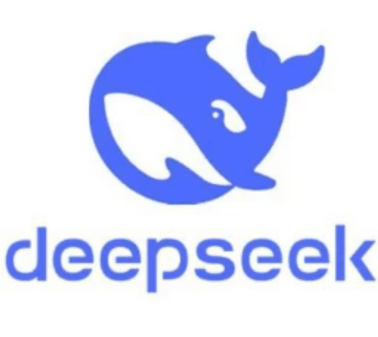QwQ-32B,支持Function Call的推理模型,深度思考Agent的时代来了!
近期,Qwen 发布了 QwQ-32B - 一个在许多基准测试中性能可与 DeepSeek-R1 相媲美的推理模型。QwQ在推理模型中集成了调用工具的能力,使其能够在使用工具的同时进行批判性思考,并根据反馈调整推理过程。这样的能力使得QwQ能够很好在Agentic System中使用。本文介绍如何通过vLLM和SgLang结合QwQ-32B,搭建OpenAI格式的聊天API,并与外部函数结合来拓展
前言
近期,Qwen 发布了 QwQ-32B - 一个在许多基准测试中性能可与 DeepSeek-R1 相媲美的推理模型。QwQ在推理模型中集成了调用工具的能力,使其能够在使用工具的同时进行批判性思考,并根据反馈调整推理过程。这样的能力使得QwQ能够很好在Agentic System中使用。本文介绍如何通过vLLM和SgLang结合QwQ-32B,搭建OpenAI格式的聊天API,并与外部函数结合来拓展模型的更多功能。
tools是OpenAI的Chat Completion API中的一个可选参数,可用于提供函数调用规范(function specifications)。这样做的目的是使模型能够生成符合所提供的规范的函数参数格式。同时,API 实际上不会执行任何函数调用。开发人员需要使用模型输出来执行函数调用。
vLLM和SgLang均支持OpenAI-API的tool参数。通过tool参数以及其中的函数调用规范,QwQ将能决定何时调用什么样的函数,以及怎么调用函数。
注:本文测试用例参考OpenAI cookbook:https://cookbook.openai.com/examples/how_to_call_functions_with_chat_models
本文主要包含以下两个个部分:
-
模型部署:使用vLLM,SgLang和QwQ,通过设置参数,部署支持Function call的聊天API接口。
-
生成函数参数:指定一组函数并使用 API 生成函数参数。
1、模型部署
模型文件下载
modelscope download --model=Qwen/QwQ-32B --local_dir ./QwQ-32B
环境安装
pip install vllm
pip install "sglang[all]>=0.4.3.post2"
vLLM部署命令
vllm serve /ModelPath/QwQ-32B \
--port 8000 \
--reasoning-parser deepseek_r1 \
--max_model_len 4096 \
--enable-auto-tool-choice \
--tool-call-parser hermes
sglang部署命令
python -m sglang.launch_server --model-path /ModelPath/QwQ-32B --port 3001 --host 0.0.0.0 --tool-call-parser qwen25
模型调用
使用OpenAI的API格式调用本地部署的QwQ模型
单轮对话
from openai import OpenAI
# 设置 OpenAI 的 API 密钥和 API 基础 URL 使用 vLLM 的 API 服务器。
openai_api_key = "EMPTY"
openai_api_base = "http://localhost:8000/v1"
client = OpenAI(
api_key=openai_api_key,
base_url=openai_api_base,
)
# 使用流式输出(stream=True)
chat_response = client.chat.completions.create(
model="path/to/QwQ-32B",
messages=[{"role": "user", "content": "你好"}],
stream=True # 启用流式响应
)
# 处理流式输出
contents = []
for e in chat_response:
# print(e.choices[0].delta.content,end="")
contents.append(e.choices[0].delta.content)
print("".join(contents))


多轮对话
from openai import OpenAI
import os
# 初始化OpenAI客户端
client = OpenAI(
api_key = "empty",
base_url="http://localhost:8000/v1"
)
reasoning_content = "" # 定义完整思考过程
answer_content = "" # 定义完整回复
is_answering = False # 判断是否结束思考过程并开始回复
messages = []
conversation_idx = 1
while True:
print("="*20+f"第{conversation_idx}轮对话"+"="*20)
conversation_idx += 1
user_msg = {"role": "user", "content": input("请输入你的消息:")}
messages.append(user_msg)
# 创建聊天完成请求
completion = client.chat.completions.create(
model="path/to/QwQ-32B",# 此处以 qwq-32b 为例,可按需更换模型名称
messages=messages,
stream=True
)
print("\n" + "=" * 20 + "思考过程" + "=" * 20 + "\n")
for chunk in completion:
# 如果chunk.choices为空,则打印usage
if not chunk.choices:
print("\nUsage:")
print(chunk.usage)
else:
delta = chunk.choices[0].delta
# 打印思考过程
if hasattr(delta, 'reasoning_content') and delta.reasoning_content != None:
print(delta.reasoning_content, end='', flush=True)
reasoning_content += delta.reasoning_content
else:
# 开始回复
if delta.content != "" and is_answering is False:
print("\n" + "=" * 20 + "完整回复" + "=" * 20 + "\n")
is_answering = True
# 打印回复过程
print(delta.content, end='', flush=True)
answer_content += delta.content
messages.append({"role": "assistant", "content": answer_content})
print("\n")
# print("=" * 20 + "完整思考过程" + "=" * 20 + "\n")
# print(reasoning_content)
# print("=" * 20 + "完整回复" + "=" * 20 + "\n")
# print(answer_content)

2、使用工具
首先,定义模型调用函数
from openai import OpenAI
# 设置 OpenAI 的 API 密钥和 API 基础 URL 使用 vLLM 的 API 服务器。
openai_api_key = "EMPTY"
openai_api_base = "http://localhost:8000/v1"
MODEL = "path/to/QwQ-32B"
client = OpenAI(
api_key=openai_api_key,
base_url=openai_api_base,
)
def chat_completion_request(messages, tools=None, tool_choice=None, model=MODEL):
try:
response = client.chat.completions.create(
model=model,
messages=messages,
tools=tools,
tool_choice="auto",
)
return response
except Exception as e:
print("Unable to generate ChatCompletion response")
print(f"Exception: {e}")
raise
然后,我们定义一些实用工具,用于调用聊天完成 API 以及维护和跟踪对话状态。
def pretty_print_conversation(messages):
role_to_color = {
"system": "red",
"user": "green",
"assistant": "blue",
"function": "magenta",
}
for message in messages:
if message["role"] == "system":
print(colored(f"system: {message['content']}\n", role_to_color[message["role"]]))
elif message["role"] == "user":
print(colored(f"user: {message['content']}\n", role_to_color[message["role"]]))
elif message["role"] == "assistant" and message.get("function_call"):
print(colored(f"assistant: {message['function_call']}\n", role_to_color[message["role"]]))
elif message["role"] == "assistant" and not message.get("function_call"):
print(colored(f"assistant: {message['content']}\n", role_to_color[message["role"]]))
elif message["role"] == "function":
print(colored(f"function ({message['name']}): {message['content']}\n", role_to_color[message["role"]]))
3、工具定义
这里假设了一个天气 API,并设置了一些函数规范和它进行交互。将这些函数规范传递给 Chat API,以便模型可以生成符合规范的函数参数。
tools = [
{
"type": "function",
"function": {
"name": "get_current_weather",
"description": "Get the current weather",
"parameters": {
"type": "object",
"properties": {
"location": {
"type": "string",
"description": "The city and state, e.g. San Francisco, CA",
},
"format": {
"type": "string",
"enum": ["celsius", "fahrenheit"],
"description": "The temperature unit to use. Infer this from the users location.",
},
},
"required": ["location", "format"],
},
}
},
{
"type": "function",
"function": {
"name": "get_n_day_weather_forecast",
"description": "Get an N-day weather forecast",
"parameters": {
"type": "object",
"properties": {
"location": {
"type": "string",
"description": "The city and state, e.g. San Francisco, CA",
},
"format": {
"type": "string",
"enum": ["celsius", "fahrenheit"],
"description": "The temperature unit to use. Infer this from the users location.",
},
"num_days": {
"type": "integer",
"description": "The number of days to forecast",
}
},
"required": ["location", "format", "num_days"]
},
}
},
]
如果我们向模型询问当前的天气情况,它将会反问,希望获取到进一步的更多的参数信息。
messages = []
messages.append({"role": "user", "content": "hi ,can you tell me what's the weather like today"})
chat_response = chat_completion_request(
messages, tools=tools
)
print(chat_response)
assistant_message = chat_response.choices[0].message
messages.append(assistant_message)
assistant_message
一旦我们通过对话提供缺失的参数信息,模型就会为我们生成适当的函数参数。
messages.append({"role": "user", "content": "I'm in Glasgow, Scotland."})
chat_response = chat_completion_request(
messages, tools=tools
)
assistant_message = chat_response.choices[0].message
messages.append(assistant_message)
assistant_message
通过不同的提示词,我们可以让它反问不同的问题以获取函数参数信息。
messages = []
messages.append({"role": "user", "content": "can you tell me, what is the weather going to be like in Glasgow, Scotland in next x days"})
chat_response = chat_completion_request(
messages, tools=tools
)
assistant_message = chat_response.choices[0].message
messages.append(assistant_message)
assistant_message
messages.append({"role": "user", "content": "5 days"})
chat_response = chat_completion_request(
messages, tools=tools
)
chat_response.choices[0]
并行函数调用
支持一次提问中,并行调用多次函数
messages = []
messages.append({"role": "user", "content": "what is the weather going to be like in San Francisco and Glasgow over the next 4 days"})
chat_response = chat_completion_request(
messages, tools=tools, model=MODEL
)
assistant_message = chat_response.choices[0].message.tool_calls
assistant_message
最后的最后
感谢你们的阅读和喜欢,作为一位在一线互联网行业奋斗多年的老兵,我深知在这个瞬息万变的技术领域中,持续学习和进步的重要性。
为了帮助更多热爱技术、渴望成长的朋友,我特别整理了一份涵盖大模型领域的宝贵资料集。
这些资料不仅是我多年积累的心血结晶,也是我在行业一线实战经验的总结。
这些学习资料不仅深入浅出,而且非常实用,让大家系统而高效地掌握AI大模型的各个知识点。如果你愿意花时间沉下心来学习,相信它们一定能为你提供实质性的帮助。
这份完整版的大模型 AI 学习资料已经上传CSDN,朋友们如果需要可以微信扫描下方CSDN官方认证二维码免费领取【保证100%免费】

大模型知识脑图
为了成为更好的 AI大模型 开发者,这里为大家提供了总的路线图。它的用处就在于,你可以按照上面的知识点去找对应的学习资源,保证自己学得较为全面。
经典书籍阅读
阅读AI大模型经典书籍可以帮助读者提高技术水平,开拓视野,掌握核心技术,提高解决问题的能力,同时也可以借鉴他人的经验。对于想要深入学习AI大模型开发的读者来说,阅读经典书籍是非常有必要的。

实战案例
光学理论是没用的,要学会跟着一起敲,要动手实操,才能将自己的所学运用到实际当中去,这时候可以搞点实战案例来学习。

面试资料
我们学习AI大模型必然是想找到高薪的工作,下面这些面试题都是总结当前最新、最热、最高频的面试题,并且每道题都有详细的答案,面试前刷完这套面试题资料,小小offer,不在话下

640套AI大模型报告合集
这套包含640份报告的合集,涵盖了AI大模型的理论研究、技术实现、行业应用等多个方面。无论您是科研人员、工程师,还是对AI大模型感兴趣的爱好者,这套报告合集都将为您提供宝贵的信息和启示。

这份完整版的大模型 AI 学习资料已经上传CSDN,朋友们如果需要可以微信扫描下方CSDN官方认证二维码免费领取【保证100%免费】

更多推荐
 已为社区贡献105条内容
已为社区贡献105条内容









所有评论(0)